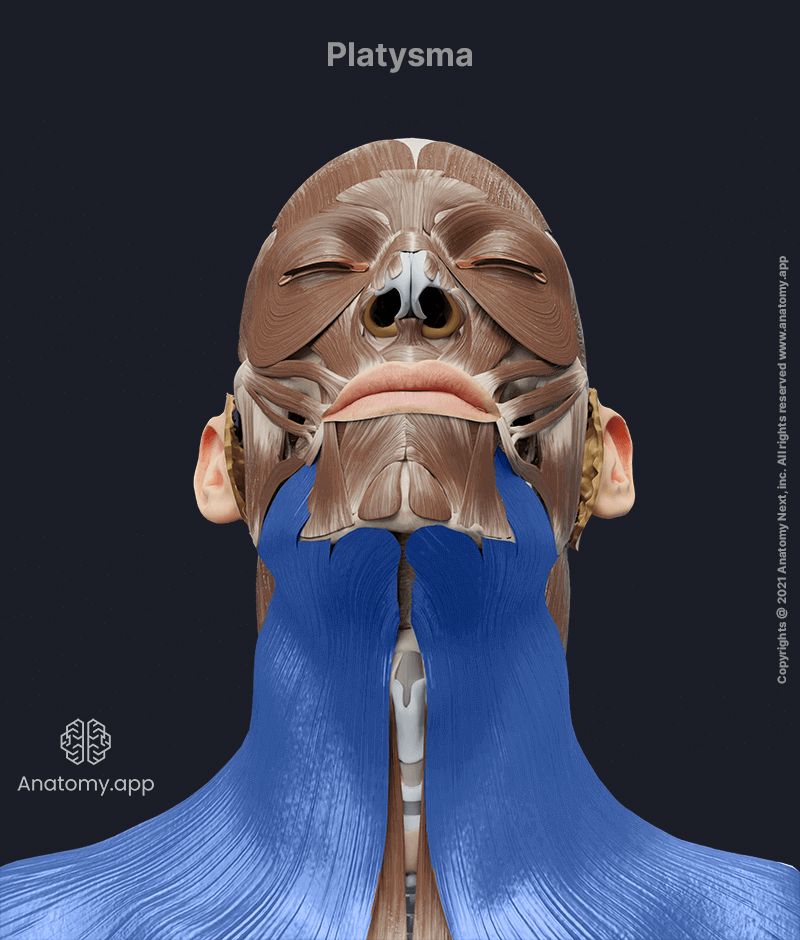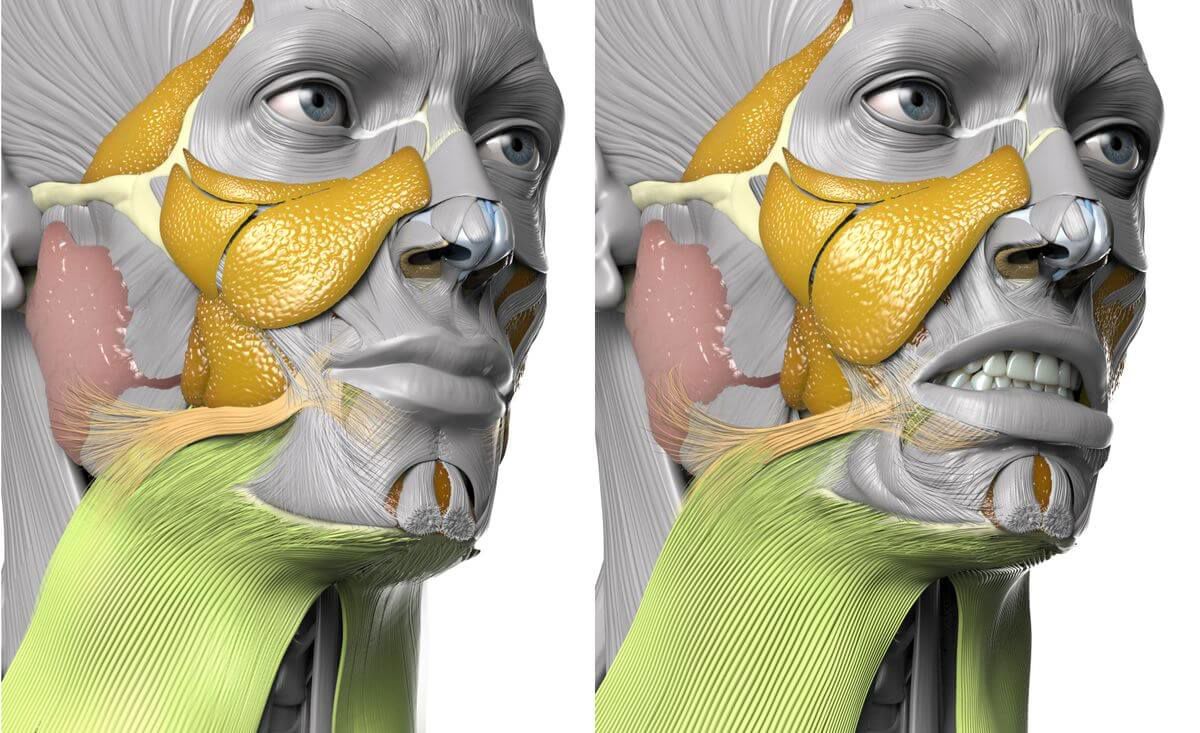- Anatomical terminology
- Skeletal system
- Joints
- Muscles
- Head muscles
-
Neck muscles
- Superficial neck muscles
- Scalene muscles
- Suprahyoid muscles
- Infrahyoid muscles
- Prevertebral muscles
- Suboccipital muscles
- Muscles of upper limb
- Thoracic muscles
- Muscles of back
- Muscles of lower limb
- Heart
- Blood vessels
- Lymphatic system
- Nervous system
- Respiratory system
- Digestive system
- Urinary system
- Female reproductive system
- Male reproductive system
- Endocrine glands
- Eye
- Ear
Platysma
The platysma (Latin: platysma) is a broad and flat neck muscle extending from the lower part of the face to the upper thorax. It is classified as the superficial neck muscle. The platysma is a paired thin muscle arising from the upper parts of the shoulders and inserting into the mouth area. It also belongs to the anterior neck muscles. The platysma partly covers the pectoralis major and deltoid muscles. In the mouth area, it divides into three parts - mandibular, labial and modiolar (nodular).
| Platysma | |
| Origin | Skin and fascia covering lower neck and upper anterolateral chest areas and structures |
| Insertion | Base of mandible, skin covering structures of lower face and angle of mouth |
| Action | Tenses and wrinkles skin of lower face and neck, depresses mandible and angle of mouth |
| Innervation | Cervical branch of facial nerve (CN VII) |
| Blood supply | Submental and suprascapular arteries |
Origin
The platysma originates from the skin over the lower neck and upper lateral and anterior chest areas. It also originates from the fascia covering the clavicle, pectoralis major and deltoid muscles.

Insertion
The platysma inserts on the base of the mandible and into the skin covering structures of the lower face and angle of the mouth.
Action
Contractions of the platysma tense and wrinkle skin of the lower face and neck regions. This muscle also contributes to forced depression of the mandible and angle of the mouth.

Innervation
The platysma is innervated by the cervical branch of the facial nerve (CN VII).
Blood supply
The platysma receives arterial blood supply from the submental artery of the facial artery and suprascapular artery arising from the thyrocervical trunk.